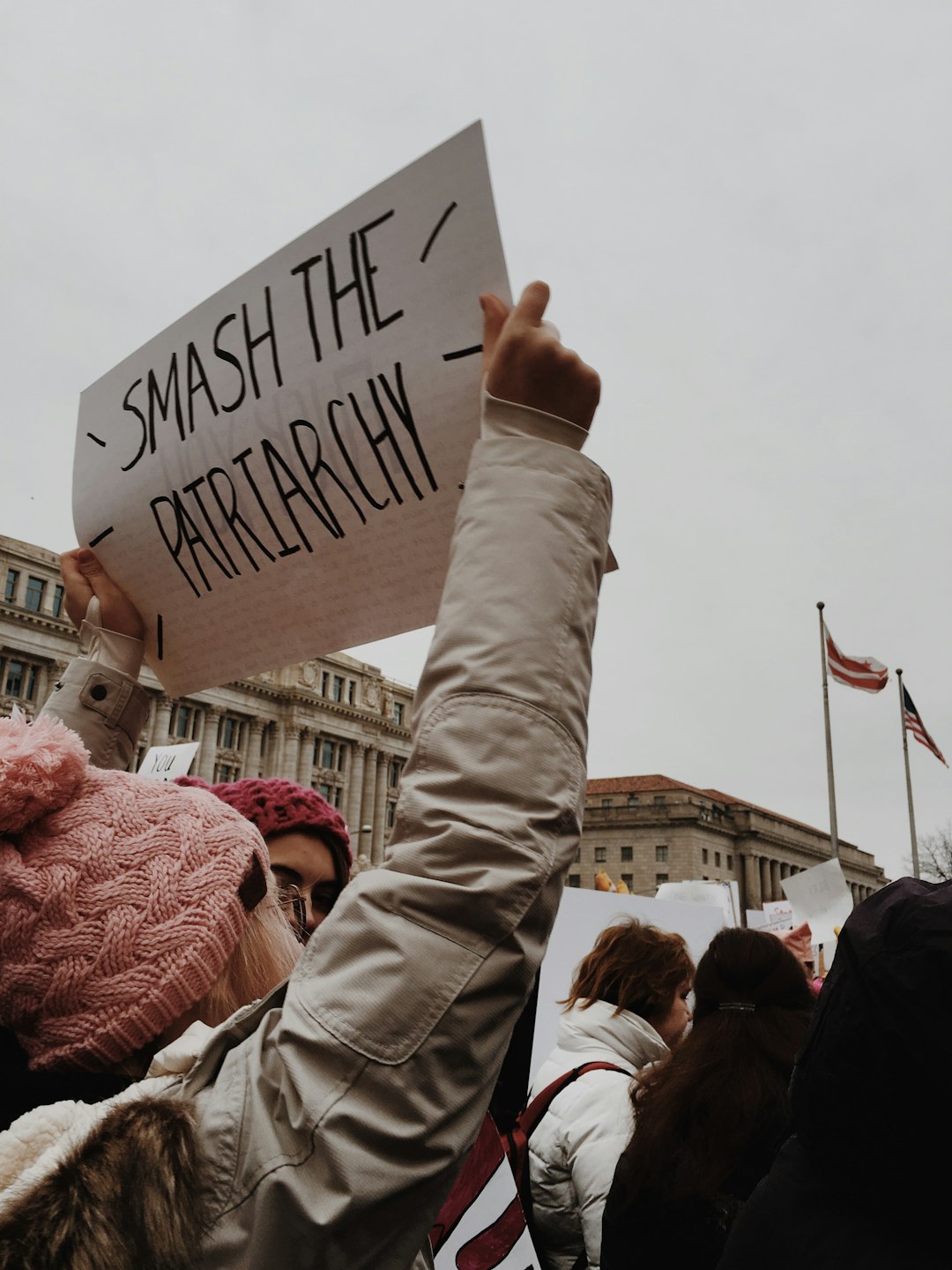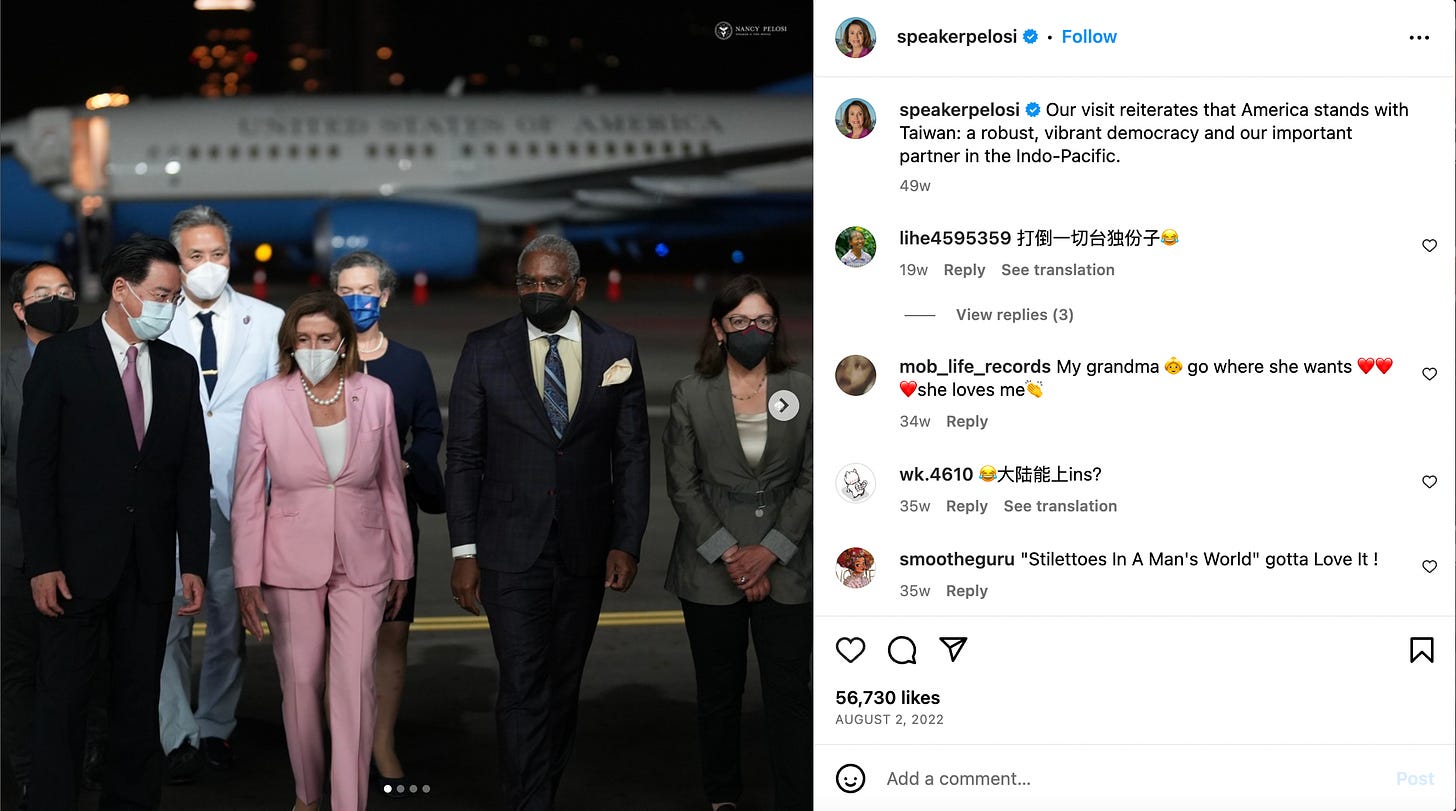Vanessa Friedman's Fashion Politics
Part of the month-long series on fashion as text
Welcome to The Matterhorn: intersections of literature & art! I investigate ideas through the arts with a cultural studies lens.
I’ve just migrated my podcast to be hosted here, so I can provide transcripts in the future for conversational recordings; please let me know if you have any issues listening here or on Apple and Spotify - thanks!
Thanks for joining me here! I would love to hear your thoughts in the comments.
How do clothes tell the stories of culture and society? When is fashion a symbol of or catalyst for change?
*Apologies: most of the links today are from NYT which has a paywall after 10 articles. Most can access through their local library if so inclined.
Just in recent years, we have seen fashion symbols of ideas and protest, as well as debates of representations of cultures and bodies through clothing.
The #metoo movement brought knit pink pussyhats and actors wearing black to the Academy Awards. Rainbow-wear is synonymous with Pride and white vests “became a symbol of queer identity.” Black Lives Matter quickly made T-shirts to celebrate the cause.
Then there’s controversy over garments like the burkini, crop tops, and the changing nature of office wear since the pandemic. The founder of the mini skirt, Mary Quant, died earlier this year. Her frock evoked a freedom for women, but one that even decades later is not always acceptable. Others might not consider trends that expose bodies to be freedom at all. However, our journalist subject today said that Quant “freed the female leg. We owe you.” in her RIP tweet for the designer.
How do clothes speak about ideas, about politics? Beyond the issues on the creation of clothing itself, such as sweat shops and representation in designers, the sartorial choices we make form a discourse like that of other literature and art forms. The difference is that it’s something we can share or confront people with as we walk down the street.
Vanessa Friedman
"Increasingly as information gets conveyed visually, whether it’s by a picture on a phone or online, the choices you make about what you put on are more important. So our attitude is, 'Let’s look at this, let’s think about why we’re making these choices, and what they mean, and what they can say to everybody else, and talk about it.'"
Vanessa Friedman, interview with The Cut
If you want to understand fashion on a deeper political level, the one to follow is Vanessa Friedman, fashion director and chief fashion critic of The New York Times since 2014.
Friedman has a lot of hot takes. Even if you’re not into fashion, you might find her writing compelling and intersecting with some of your other interests. Sure, she also oversees reviews of the aesthetics of the fashion worlds and the direction of trends, for example. But in addition, and in particular her own writing, often moves into a zone of fashion-as-text or reading the social and cultural in the fashion world.
I had come across her work casually over the years in places like Financial Times, The New Yorker, Vogue, and Vanity Fair where she had worked previously. When Friedman was studying at Princeton, she had hoped to become a fiction writer. However, she quickly started as a freelancer in her native New York before working at The Economist and FT in London, then eventually moved back to New York for her current role.
About five years ago, I was looking for a non-traditional literary body of work to teach my high school students and discovered her work rather freshly. Oh, I realized, she’s really got something to say! As we looked at her oeuvre together, the students were able to discover ideas through her writing as well as ideas about writing itself.
Her versatility takes her fashion articles to places like the NBA draft, ChatGPT and Apple’s Vision Pro, and museum shows. She is (still) extremely prolific considering her job as director and editor.
Events
Many articles move into the symbolic, even literary, reading of fashion choices at political events. In “Kaitlan Collins, in a White Suit, Takes on Trump,” Friedman considers the way Collins “dressed for the arena” during her CNN interview with Trump. Framed within a discussion of other White House and US government female fashion choices like the bright colors of Nancy Pelosi and white suit of Melania Trump, Friedman understands her subject: “As Ms. Collins is both a former White House correspondent and the co-host of a morning show, where how you appear and what colors you wear is actually part of the job, there’s little doubt she understood the import of what she was doing. Or donning.” She goes on to explain the female power pantsuit “separated [Collins] from her subject to start” as a purposeful choice that “align[ed] with history.”
Similarly, Friedman looks at choices of royals at events in relation to traditions and modern symbolic statements. Specifically in regards to the British royalty, she has many things to say. In “Coronation Fashion: Queen Camilla, Princess Catherine and Clothes Full of Meaning,” the fashion critic considers layers of meaning across generations. The article begins: “Is there any pageant of state more chockablock with symbolism than a royal coronation? Almost every detail, from the crown itself to the ‘bracelets of sincerity and wisdom’ presented to the new monarch, is redolent of meaning.” From antique jewelry to an Alexander McQueen dress, the ubiquitous symbols of dress were both ornate and purposeful.
Everyday life
Friedman also discusses fashion of the everyday. She gives advice for travel and discusses the impracticality of white sneakers. She considers how much skin one should show in certain situations and fashion’s relationship with age.
In response to a reader’s question, Friedman also discusses her response to the all-important question: “Do Yoga Pants Qualify as Real Pants?” Ah, yoga pants. This will be a topic of discussion on the Yoga Culture podcast! There’s actually a ton to discuss here.
In a discussion of changing wardrobes in the workplace, the critic writes:
But let’s be honest: Yoga pants are not pants. Pants are there to reshape the body in some way. To tailor it into a different silhouette — straighter, longer, more flowing — in the eyes of the watching world. To provide a modicum of protection or social camouflage. Yoga pants, on the other hand, are much more about revealing the body in some of its glory. And revealing the body in the workplace or on the street is a complicated decision.
She then looks to another fashion expert to explain the way to find ‘yoga-like pants’ that can be worn in some situations and accessorized with certain types of shoes and tops for things like travel or errands. Of course, you don’t have to take her advice. But it’s interesting to examine the considerations one might take and the way your choice might be perceived.
World politics and protest
In a discussion of the head scarf, Friedman asks the philosophical question in “What Freedom Looks Like”: “Is it fashion's responsibility to ease acceptance of different identities; to foster tolerance and understanding – or to promote a specific aesthetic expression of liberty?" Rather than come down with a firm opinion, she investigates the debate with the fashion world which is closely linked to media conflict in France as well as, of course, money (what sells).
Friedman has looked at the way designers used Black Lives Matter as a springboard for their own ideas on the catwalk. She looks both at what she says and what the designers tell her they want the audience to see. This is not always the same, but it’s the case for all art. She considers the way fashion can help us celebrate movements of society rather than push for a change themselves.
Similarly with the #MeToo movement and #TimesUp era, Friedman has looked at fashion especially on the red carpet that has made a statement either in protest or celebration. Many fashion publications have discussed this topic, such as Vogue who decided they were tired of black-clothing protest and made a plea: “Why not celebrate the strength and courage of those brave women who are speaking up and speaking out by donning the signature colors of the suffrage movement?” After all, protest shouldn’t subdue the people who are looking for freedom. Additionally, Friedman published an article specifically looking at the way models are treated in the industry in relation to safeguarding.
A final political article I’ll mention here was in relation to the Hong Kong protests. In “The Color of Protest,” Friedman relatedly considers black clothing. She begins:
Imagine a world where you couldn’t wear black.
Where would that leave the beatniks and the goths? The Audrey Hepburn wannabes? Where would it leave the fashion folk, and all the social and cultural groups that have seized on the color as an identifier thanks to its long-term associations with … well, take your pick … darkness, existential angst, artistic endeavor, intimidation, obscurity, rigor, efficiency, mystery, depression and sophistication?
Where would it leave the protesters?
At one point, Hong Kong banned the import of black clothing in an attempt to thwart protesters’ uniform. She discusses the history of black as protest from Queen Victoria to the Black Panthers in addition to the #TimesUp red-carpet gowns.
But, Friedman argues, black is not necessary. Any color can unite a group in a common idea. The point is in using fashion choices to make a unified statement and an overwhelming sea of opposition that is as visible as it is audible.
Fashion is unique in its everydayness: we can wear symbolic colors, printed ideas, and aesthetic trends to say something about ourselves or the world we live in. We can also choose to blend in or pass in various situations based on our clothing choices. Even jeans at the workplace can be a form of protest. It might be useful to consider what one is protesting against or what (in policing) one is hoping to suppress.









It blindsided me this morning this article. I have never thought about fashion in any of these ways but it really is a social and cultural influencer. Not just as iconic pieces are but more the everyday wearing of pieces to show your support and ‘self’ to others. Great piece.
Thank you for this interesting look at the ways we use fashion! It's got to be one of the foremost ways we identify with our 'tribe' as a teenager, and then even as we grow and change.